Abstract
Eleven gram-negative aerobic bacteria (Pseudomonadaceae and Neisseriaceae) out of 122 soil isolates were selected for their ability to assimilate poplar dioxane lignin without a cosubstrate. Dioxane lignin and milled wood lignin degradation rates ranged between 20 and 40% of initial content after 7 days in mineral medium, as determined by a loss of absorbance at 280 nm; 10 strains could degrade in situ lignin, as evidenced by the decrease of the acetyl bromide lignin content of microtome wood sections. No degradation of wood polysaccharides was detected. Lignin biodegradation by Pseudomonas 106 was confirmed by 14CO2 release from labeled poplar wood, although in lower yields compared with results obtained through chemical analysis based on acetyl bromide residual lignin determination.
Full text
PDF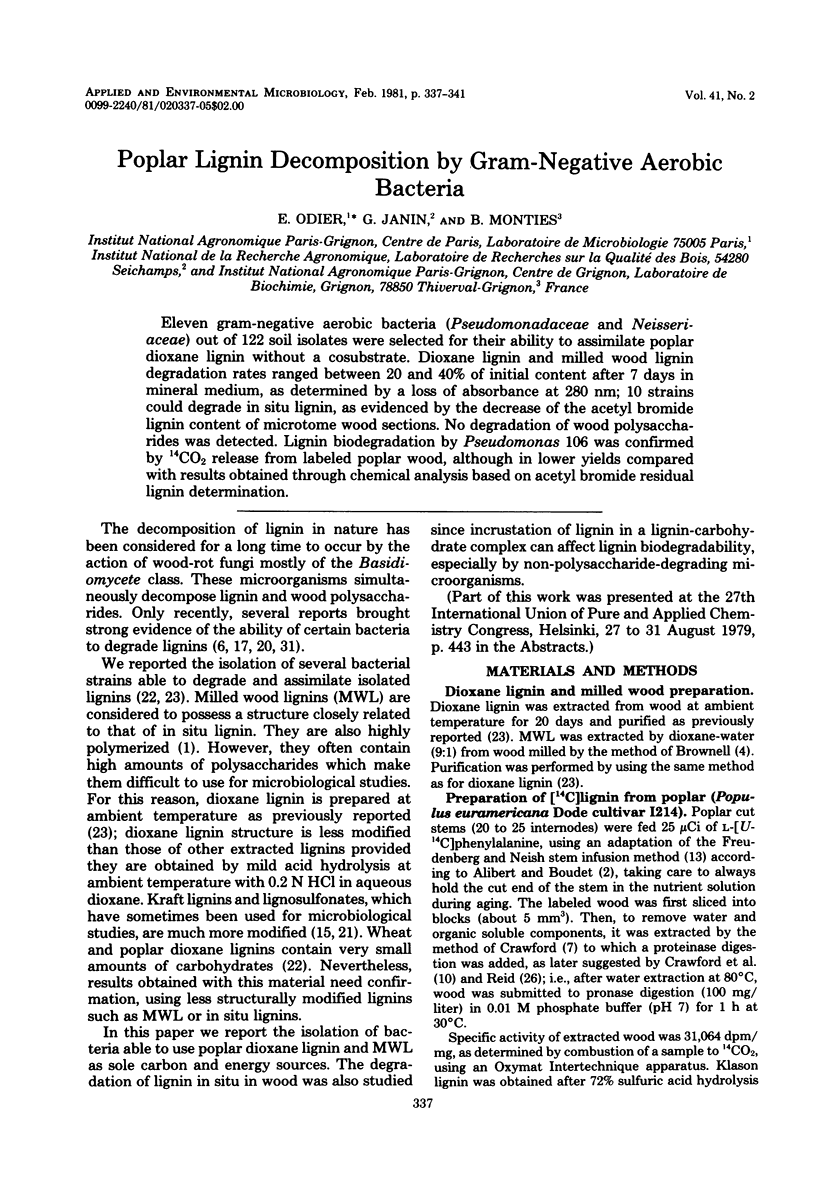
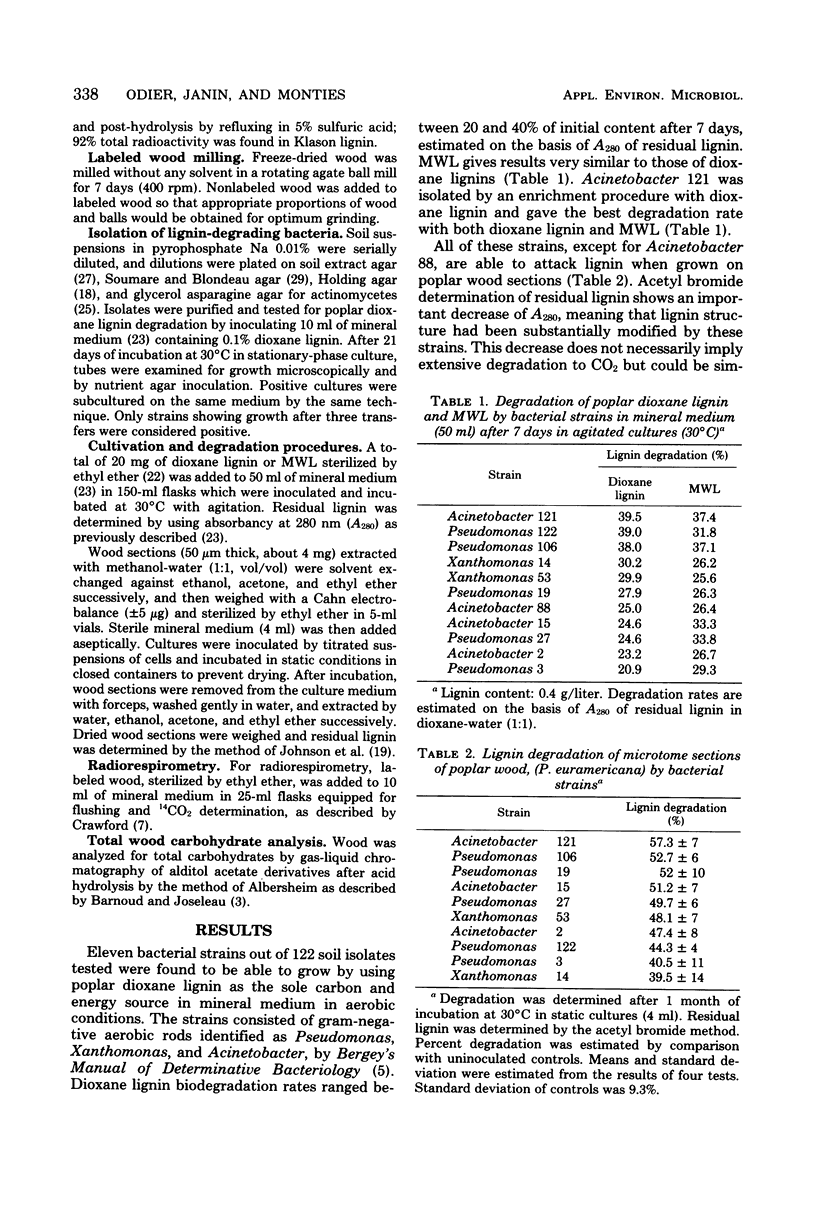
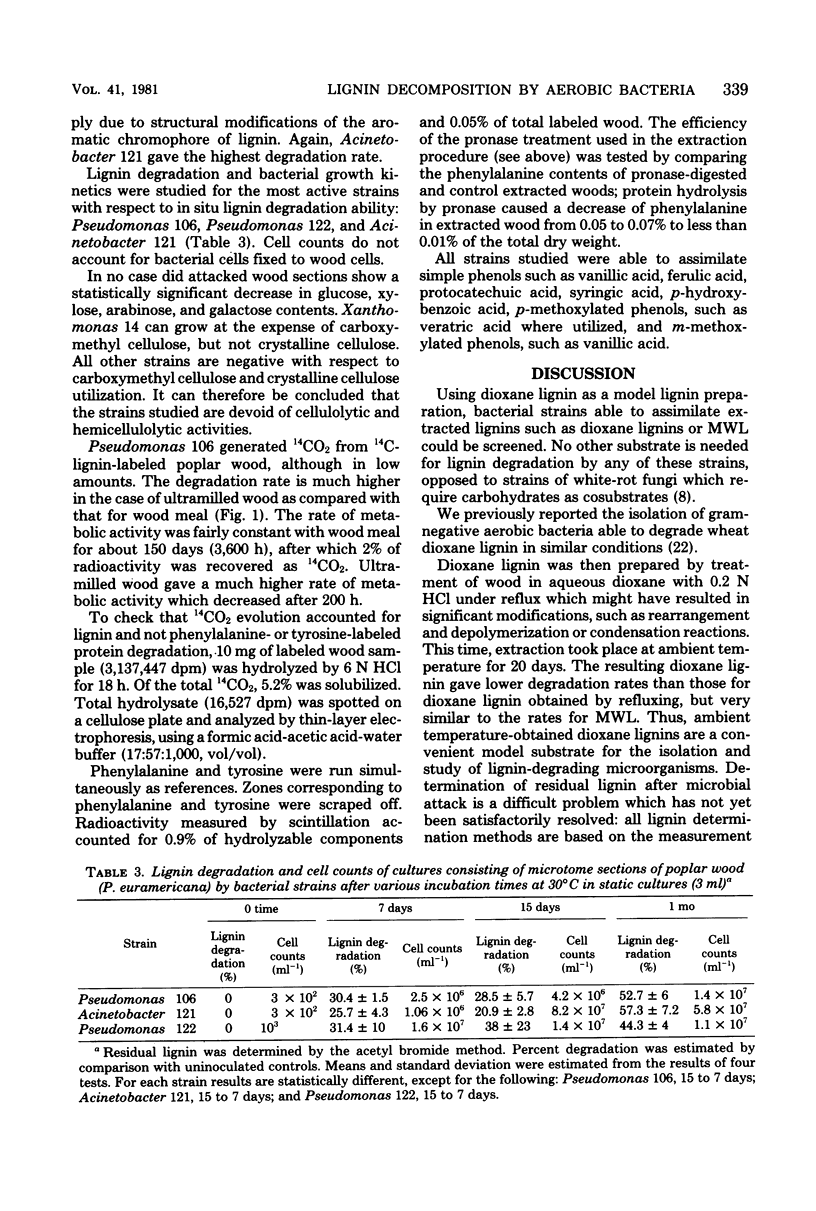
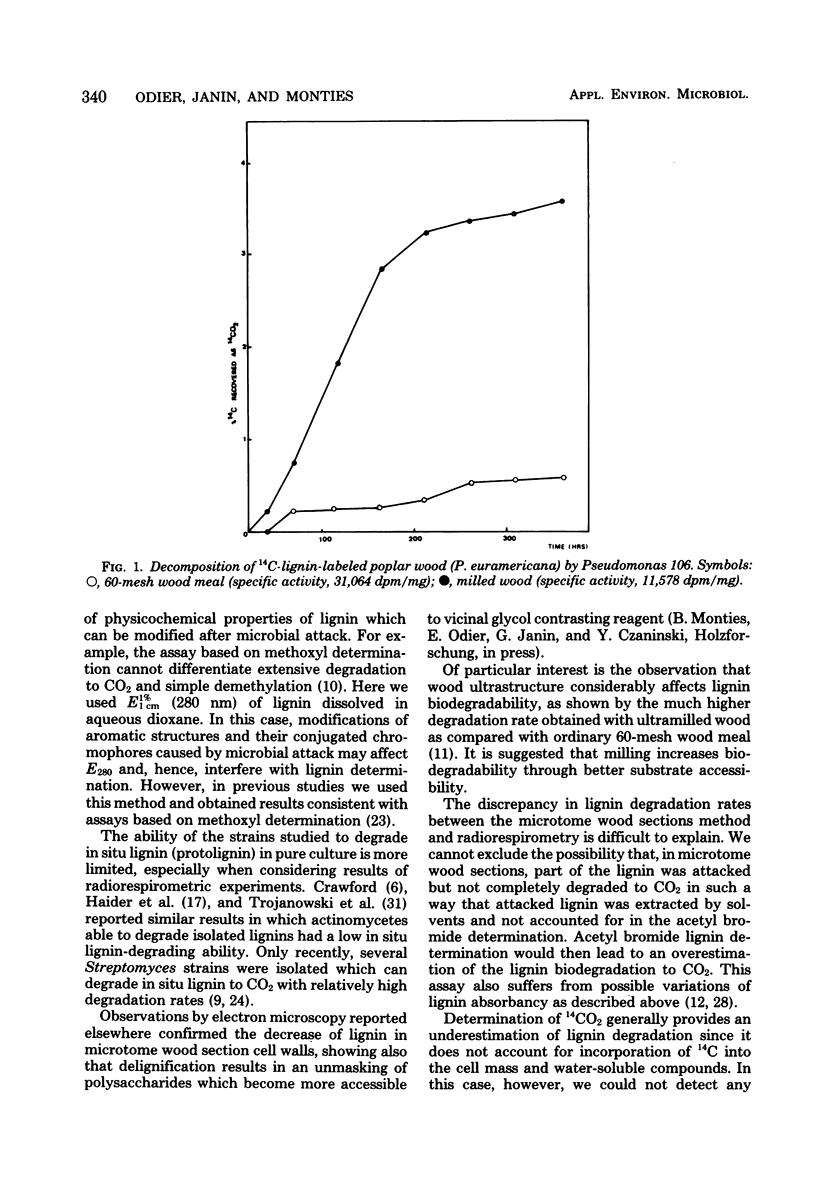
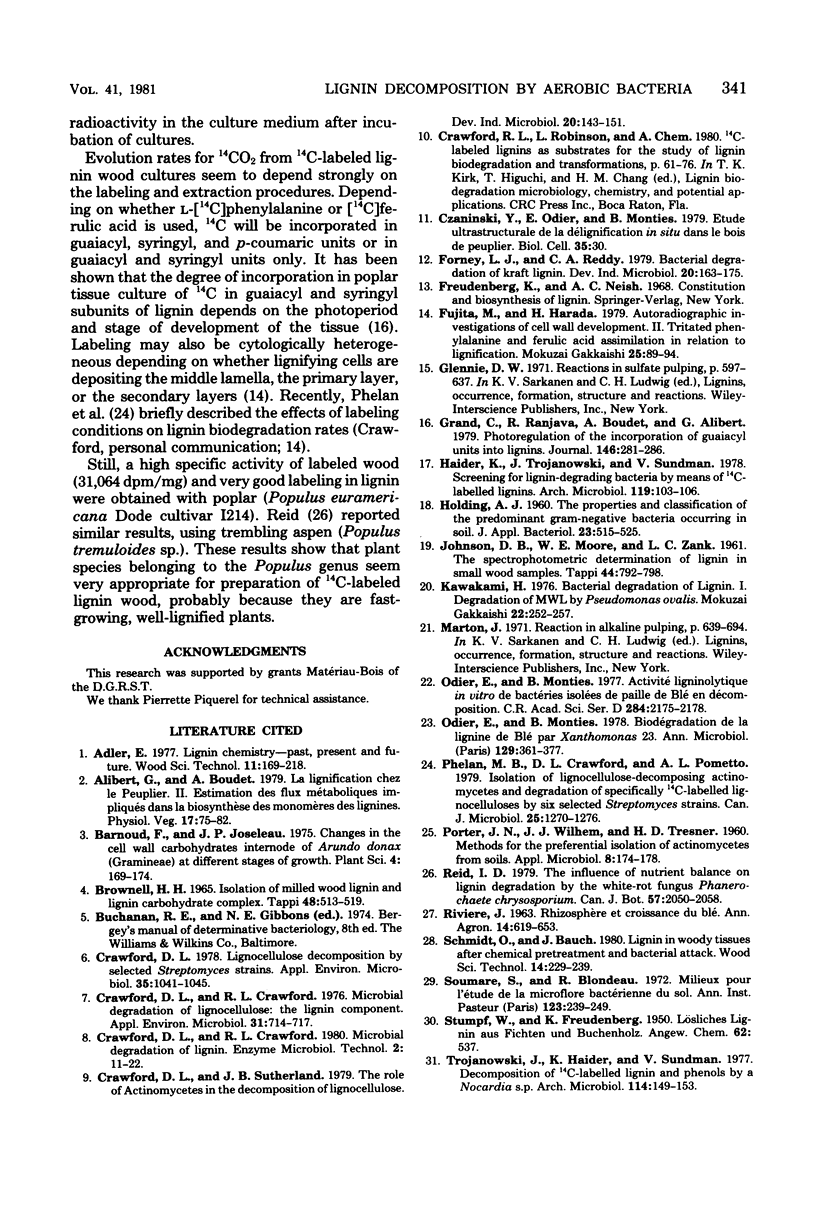
Selected References
These references are in PubMed. This may not be the complete list of references from this article.
- Crawford D. L., Crawford R. L. Microbial degradation of lignocellulose: the lignin component. Appl Environ Microbiol. 1976 May;31(5):714–717. doi: 10.1128/aem.31.5.714-717.1976. [DOI] [PMC free article] [PubMed] [Google Scholar]
- Crawford D. L. Lignocellulose decomposition by selected streptomyces strains. Appl Environ Microbiol. 1978 Jun;35(6):1041–1045. doi: 10.1128/aem.35.6.1041-1045.1978. [DOI] [PMC free article] [PubMed] [Google Scholar]
- Haider K., Trojanowski J., Sundman V. Screening for lignin degrading bacteria by means of 14C-labelled lignins. Arch Microbiol. 1978 Oct 4;119(1):103–106. doi: 10.1007/BF00407936. [DOI] [PubMed] [Google Scholar]
- Odier E., Monties B. Biodégradation de la lignine de blé par Xanthomonas 23. Ann Microbiol (Paris) 1978 Apr;129(3):361–377. [PubMed] [Google Scholar]
- PORTER J. N., WILHELM J. J., TRESNER H. D. Method for the preferential isolation of Actinomycetes from soils. Appl Microbiol. 1960 May;8:174–178. doi: 10.1128/am.8.3.174-178.1960. [DOI] [PMC free article] [PubMed] [Google Scholar]
- Phelan M. B., Crawford D. L., Pometto A. L., 3rd Isolation of lignocellulose-decomposing actinomycetes and degradation of specifically 14C-labeled lignocelluloses by six selected Streptomyces strains. Can J Microbiol. 1979 Nov;25(11):1270–1276. doi: 10.1139/m79-200. [DOI] [PubMed] [Google Scholar]
- Soumare S., Blondeau R. Caractéristiques microbiologiques des sols de la région du Nord de la France: importance des "Arthrobacter". Ann Inst Pasteur (Paris) 1972 Aug;123(2):239–249. [PubMed] [Google Scholar]
- Trojanowski J., Haider K., Sundman V. Decomposition of 14C-labelled lignin and phenols by a Nocardia sp. Arch Microbiol. 1977 Aug 26;114(2):149–153. doi: 10.1007/BF00410776. [DOI] [PubMed] [Google Scholar]


